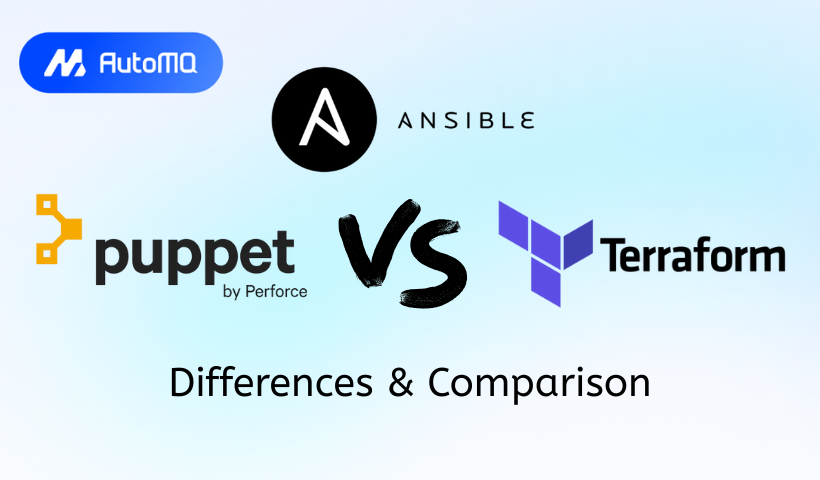Introduction
In the dynamic world of software engineering and DevOps, automation is not just a luxury but a necessity. Choosing the right tools to manage infrastructure and applications can significantly impact efficiency, reliability, and scalability. Among the plethora of options, Ansible, Terraform, and Puppet stand out as prominent players, each with distinct philosophies and strengths. This blog post provides a concise overview of each tool and then dives into a detailed comparison to help you make informed decisions for your infrastructure needs.
Understanding the Tools
Before comparing, let's briefly understand what each tool is designed for.
Ansible: The Orchestrator and Configurator
Ansible is an open-source automation tool that excels at configuration management, application deployment, task automation, and IT orchestration. It is known for its simplicity, agentless architecture, and human-readable YAML syntax for writing "playbooks." Ansible operates by connecting to nodes (servers or network devices) typically via SSH (or WinRM for Windows) and pushing small programs called "Ansible modules" to them. These modules are executed on the remote nodes to achieve the desired state [1]. Its ease of use and gentle learning curve have made it a favorite for a wide range of automation tasks.
![Ansible Overview [7]](https://static-file-demo.automq.com/6809c9c3aaa66b13a5498262/69099ba404ee57c4b2c973fa_67480fef30f9df5f84f31d36%252F685e620c454fab1b0a3d6bb1_kQsf.png)
Terraform: The Infrastructure Provisioner
Terraform, developed by HashiCorp, is an open-source Infrastructure as Code (IaC) tool focused on building, changing, and versioning infrastructure safely and efficiently. It allows users to define infrastructure resources1 (like virtual machines, storage, networks, and higher-level components like DNS entries) in a declarative configuration language called HashiCorp Configuration Language (HCL). Terraform interacts with various cloud providers (AWS, Azure, GCP, etc.) and other services through "providers." It keeps track of the managed infrastructure using a "state file," which is crucial for understanding dependencies and managing the lifecycle of resources [2]. Its primary goal is provisioning, not detailed software configuration on existing servers.
![Terraform Website [6]](https://static-file-demo.automq.com/6809c9c3aaa66b13a5498262/69099ba004ee57c4b2c97298_67480fef30f9df5f84f31d36%252F685e620d032bcb896d05351e_i4td.png)
Puppet: The State Enforcer
Puppet is a mature, model-driven configuration management tool designed to automate the delivery and operation of software at scale. It uses a master-agent architecture where a central Puppet master server manages configuration manifests written in Puppet's declarative Domain Specific Language (DSL). Agents installed on managed nodes poll the master, receive a compiled catalog describing their desired state, and then apply that state, ensuring consistency and compliance [3]. Puppet emphasizes defining a desired end-state and letting the tool enforce it, making it strong for environments with strict compliance and governance requirements. Key components include Facter for gathering node facts and Hiera for separating data from configuration code [4].
![Puppet Website [5]](https://static-file-demo.automq.com/6809c9c3aaa66b13a5498262/69099ba004ee57c4b2c97292_67480fef30f9df5f84f31d36%252F685e620ea37c4346fb888e08_sRzJ.png)
Deep Dive Comparison: Ansible vs. Terraform vs. Puppet
While all three tools contribute to automation, their approaches, core strengths, and ideal use cases differ significantly.
Core Philosophy and Primary Use Cases
Ansible: Focuses on simplicity and ease of use for a broad range of IT automation tasks. Its primary use cases include configuration management, application deployment, workflow orchestration (e.g., rolling updates), and security/compliance automation. It's often chosen for its versatility and ability to manage existing infrastructure quickly.
Terraform: Centers around infrastructure provisioning and lifecycle management as code. It excels at creating, modifying, and destroying infrastructure resources across multiple cloud and on-premises environments. While it can trigger configuration scripts, its main job is to get the infrastructure itself stood up or torn down.
Puppet: Emphasizes enforcing a desired state across an infrastructure through a model-driven approach. Its core strengths lie in deep configuration management, automated compliance, and ensuring consistency over the long term in complex environments. Puppet is designed to continuously monitor and correct configuration drift.
The fundamental difference lies in their focus: Terraform builds the house, while Ansible and Puppet furnish and maintain it.
Architecture and Operational Model
Ansible: Employs an agentless architecture. It communicates with managed nodes typically over SSH (for Linux/Unix) or WinRM (for Windows). This means no daemons or agents need to be installed on the target machines, simplifying setup and reducing overhead. It operates on a push model, where configurations and commands are pushed from the control node to the targets.
Terraform: Is also agentless in the traditional sense. It's a command-line tool that interacts with platform APIs (e.g., cloud provider APIs) to provision resources. It doesn't require an agent running on the infrastructure it manages. Its operational model involves writing code, planning changes, and then applying those changes (a form of push).
Puppet: Uses a master-agent architecture. A Puppet agent must be installed on each managed node. These agents periodically contact the Puppet master to fetch their configuration catalogs. This is a pull model, where clients initiate the configuration update process. This model ensures continuous enforcement as agents regularly check in.
Configuration Language and Paradigm
Ansible: Uses YAML for its playbooks. YAML is human-readable and relatively easy to learn. Ansible playbooks are generally procedural (defining tasks in order) but can be used to describe desired states declaratively through its modules.
Terraform: Uses HashiCorp Configuration Language (HCL). HCL is designed to be declarative, meaning you define the desired end state of your infrastructure, and Terraform determines how to achieve it. It's more structured than YAML and specifically built for defining infrastructure resources.
Puppet: Uses its own Puppet DSL, which is a declarative, model-driven language written in Ruby. Users define resources and their desired states, and Puppet handles the dependencies and execution order to reach that state. This requires learning a domain-specific language.
State Management
Ansible: Is largely stateless by design. It doesn't maintain a persistent record of the applied configurations on its control node in the same way Terraform does. It relies on modules to intelligently determine the current state of a resource on the target node before making changes. For more complex orchestration, features like Ansible Tower (or AWX) can provide more stateful insights.
Terraform: State management is a core concept. Terraform creates and maintains a state file (e.g.,
terraform.tfstate) that stores the mapping between your configuration and the real-world resources it manages. This state file is crucial for planning updates, understanding dependencies, and managing infrastructure drift. Remote state backends (like AWS S3, Azure Blob Storage) are recommended for team collaboration and locking.Puppet: Manages the desired state of nodes. While the agent doesn't keep a persistent state file in the Terraform sense, the Puppet master compiles and serves catalogs, and PuppetDB can be used to store rich data about the managed infrastructure, including facts, catalogs, and reports. This allows for querying and understanding the state of the entire infrastructure.
Idempotency
All three tools are designed to be idempotent, meaning applying the same configuration multiple times will result in the same system state without unintended side effects.
Ansible: Achieves idempotency through its modules, which are written to check the current state before applying changes. However, it's possible to write non-idempotent custom scripts or tasks if not careful.
Terraform: Being declarative, idempotency is a fundamental aspect. Applying the same HCL configuration repeatedly will only make changes if the current state differs from the desired state.
Puppet: Its declarative nature and resource abstraction layer ensure that resources are only modified if they are not in their desired state.
Learning Curve and Ease of Use
Ansible: Generally considered to have the easiest learning curve. YAML is straightforward, and the agentless nature simplifies initial setup. Many users can become productive relatively quickly.
Terraform: HCL is relatively easy to pick up for simple configurations, but mastering concepts like state management, module development, and advanced HCL features can present a moderate learning curve.
Puppet: Often perceived as having the steepest learning curve due to its Ruby-based DSL, master-agent architecture, and model-driven concepts. Initial setup of the Puppet master can also be more involved.
Community and Ecosystem
Ansible: Has a very large and active community. Ansible Galaxy is a vast repository of community-contributed roles and collections, making it easy to find pre-built automation for common tasks.
Terraform: Boasts a massive community and a rich ecosystem, especially its Terraform Registry, which hosts thousands of providers and modules for interacting with various cloud platforms and services.
Puppet: Has a mature and established community with a wealth of modules available on Puppet Forge. While perhaps not as explosively growing as Terraform's in recent years, it's very stable and provides deep knowledge.
Scalability
Ansible: Can scale to manage thousands of nodes. Performance can depend on the control node's resources, network latency, and the number of forks used. For very large environments, strategies like using multiple control nodes or Ansible Tower/AWX are common.
Terraform: Scales well for managing vast amounts of infrastructure resources, as its operations are primarily API calls. The complexity in scaling often lies in managing large codebases and state files, which tools like Terragrunt or best practices around modularization can address.
Puppet: Designed for scalability, capable of managing tens of thousands of nodes with a properly configured Puppet master and potentially multiple compile masters. Its pull-based model distributes the load effectively.
Security Considerations
Ansible: Being agentless, its primary security consideration is the SSH/WinRM connection and key management. Secrets are managed using Ansible Vault.
Terraform: Security involves protecting state files (which can contain sensitive information if not managed carefully), managing API credentials for providers securely (e.g., using environment variables, Vault, or IAM roles), and ensuring HCL code doesn't expose secrets.
Puppet: Security involves securing the Puppet master, protecting agent SSL certificates, and managing sensitive data within manifests (often using Hiera with eyaml or integrating with tools like HashiCorp Vault). The agent requires network access to the master.
Choosing the Right Tool
The decision between Ansible, Terraform, and Puppet is rarely an "either/or" scenario for all tasks. Often, they are complementary.
Choose Ansible if:
You need a versatile tool for configuration management, application deployment, and ad-hoc task execution.
Simplicity and a gentle learning curve are high priorities.
An agentless architecture is preferred.
You need to orchestrate complex workflows across different systems.
Choose Terraform if:
Your primary goal is infrastructure provisioning and managing the lifecycle of cloud or on-premises resources.
You need a consistent way to manage infrastructure across multiple cloud providers (multi-cloud strategy).
You embrace Infrastructure as Code for defining and versioning your infrastructure.
Choose Puppet if:
You require robust, model-driven configuration management with a strong emphasis on maintaining a desired state and compliance.
You manage a large, complex, and relatively stable infrastructure where consistency and automated remediation of drift are key.
A pull-based, agent-centric model fits your operational requirements for continuous enforcement.
The Power of Synergy: Using Them Together
A common and highly effective pattern is to use these tools in combination:
Terraform provisions the underlying infrastructure (VPCs, subnets, VMs, Kubernetes clusters, databases).
Once the infrastructure is available, Ansible or Puppet takes over to configure the operating systems, install and manage software, deploy applications, and ensure ongoing compliance.
For instance, a Terraform configuration might create a new virtual machine, and as a final step, a provisioner within Terraform could trigger an Ansible playbook to configure that VM with the necessary application stack. This layered approach leverages the strengths of each tool appropriately.
Conclusion
Ansible, Terraform, and Puppet are all powerful automation tools, but they are designed to solve different primary problems. Ansible shines with its simplicity and versatility in configuration and orchestration. Terraform is the king of infrastructure provisioning and IaC. Puppet provides deep, model-driven enforcement of desired states in complex environments.
Understanding their core philosophies, architectures, and ideal use cases allows you to select the most appropriate tool for a given task or, more powerfully, to combine them to create a comprehensive and robust automation strategy for your entire infrastructure and application lifecycle. The key is to evaluate your specific needs, team skills, and the nature of your infrastructure to make an informed choice.
If you find this content helpful, you might also be interested in our product AutoMQ. AutoMQ is a cloud-native alternative to Kafka by decoupling durability to S3 and EBS. 10x Cost-Effective. No Cross-AZ Traffic Cost. Autoscale in seconds. Single-digit ms latency. AutoMQ now is source code available on github. Big Companies Worldwide are Using AutoMQ. Check the following case studies to learn more:
Grab: Driving Efficiency with AutoMQ in DataStreaming Platform
Palmpay Uses AutoMQ to Replace Kafka, Optimizing Costs by 50%+
How Asia’s Quora Zhihu uses AutoMQ to reduce Kafka cost and maintenance complexity
XPENG Motors Reduces Costs by 50%+ by Replacing Kafka with AutoMQ
Asia's GOAT, Poizon uses AutoMQ Kafka to build observability platform for massive data(30 GB/s)
AutoMQ Helps CaoCao Mobility Address Kafka Scalability During Holidays
JD.comx AutoMQ x CubeFS: A Cost-Effective Journey at Trillion-Scale Kafka Messaging
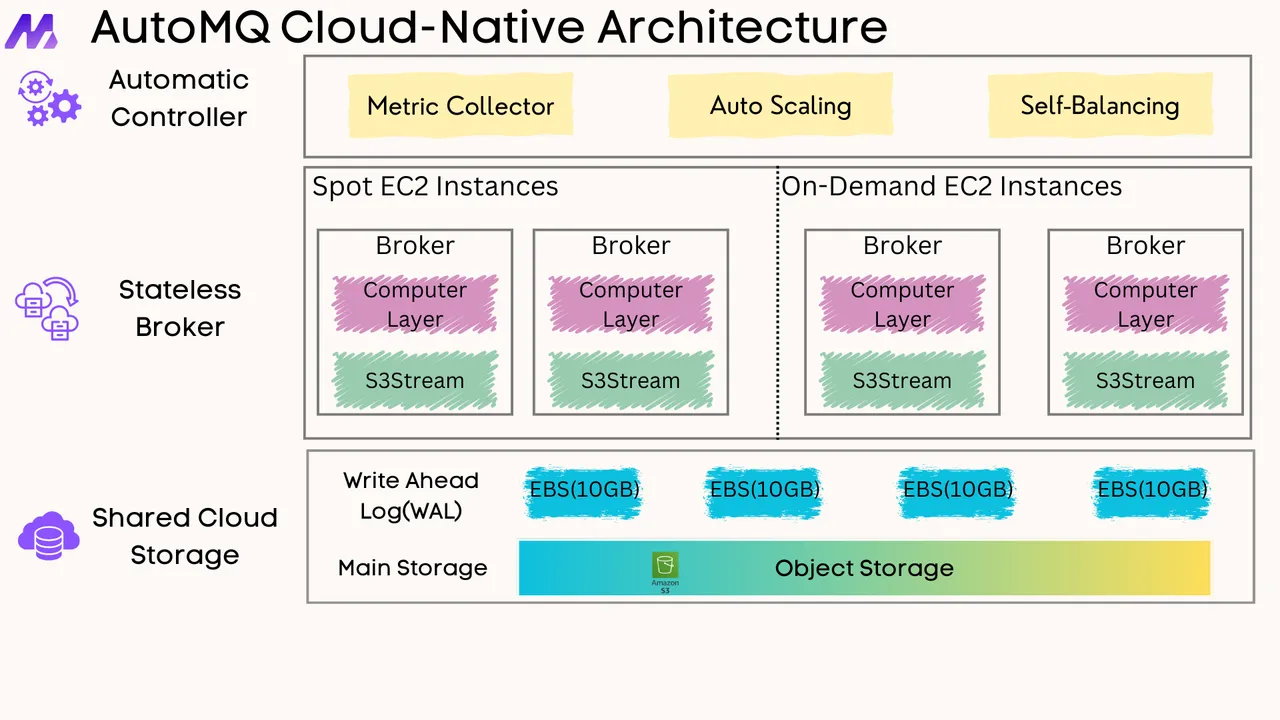





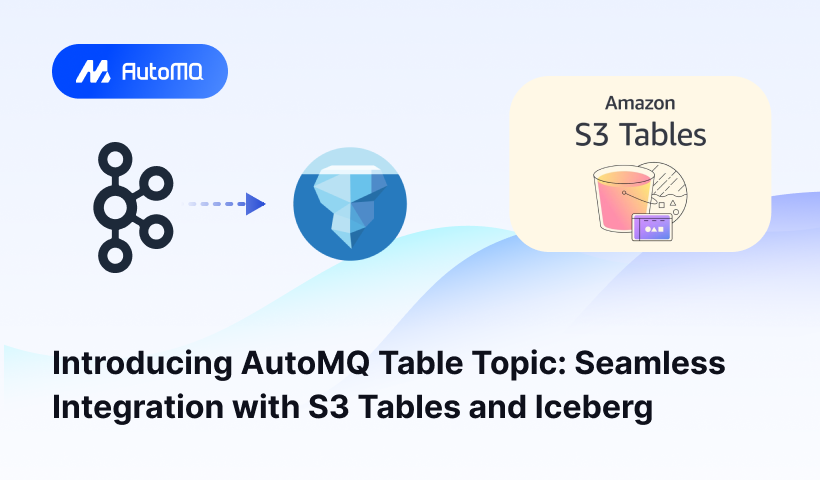
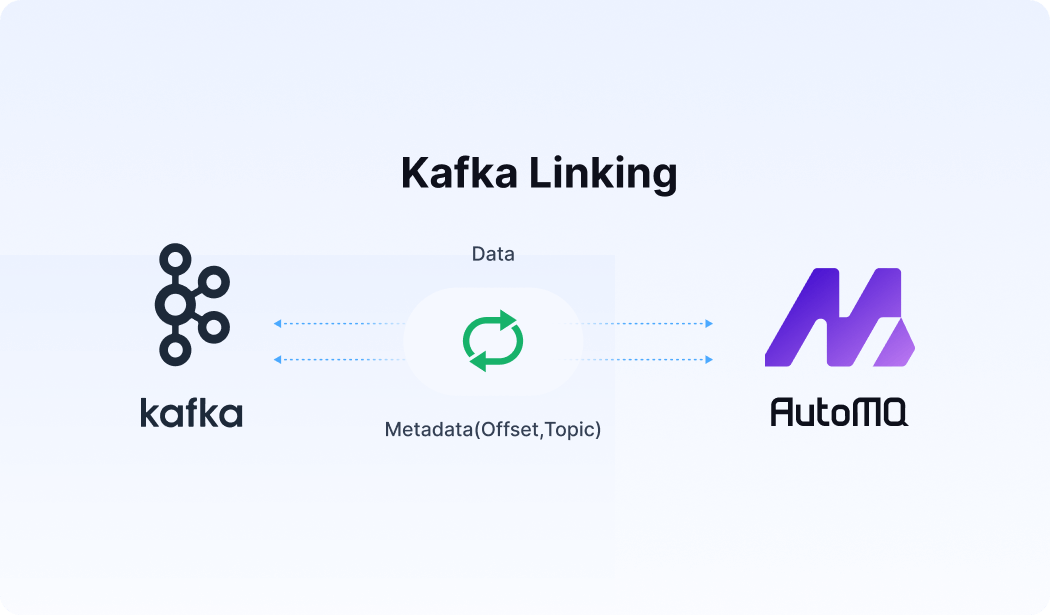




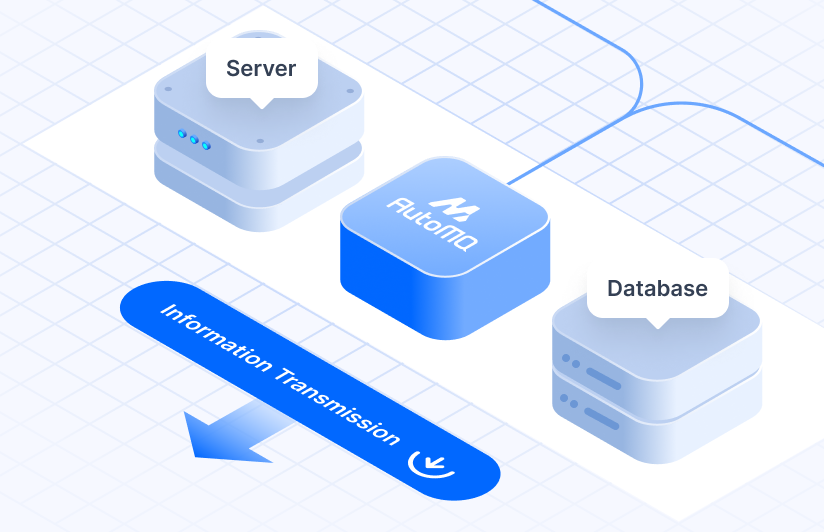



.png)
